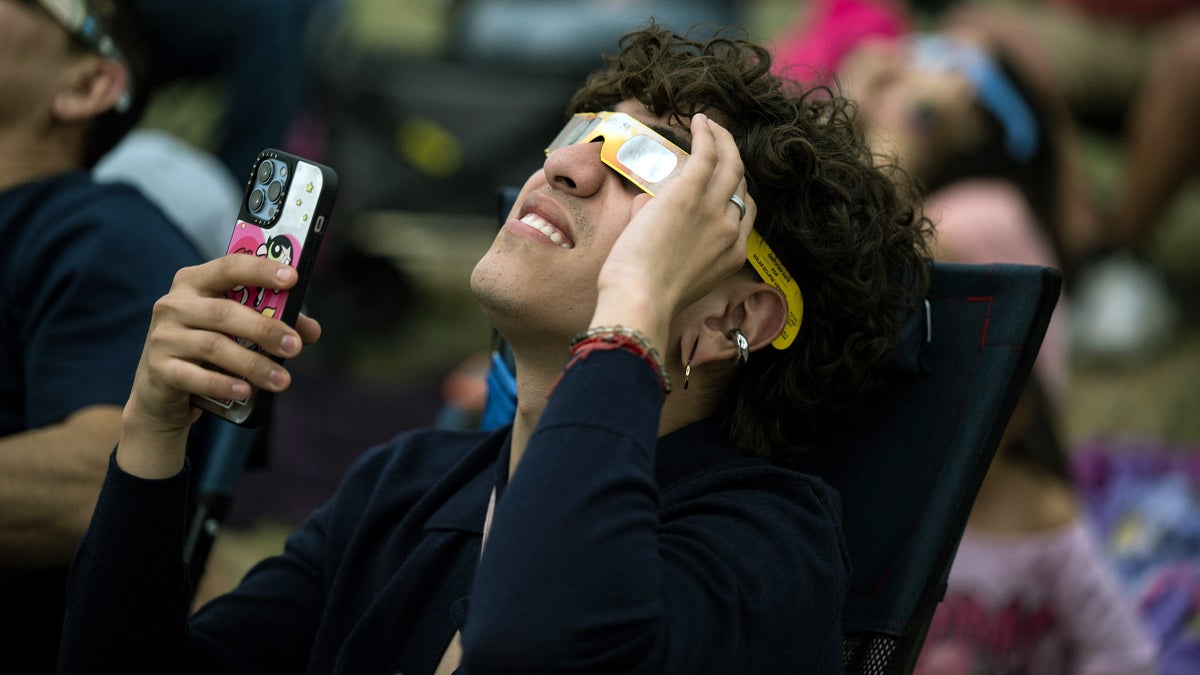NASA was against phone pictures of the eclipse but people still took these shots

image: NASA HQ Photo (Flickr)
Google Trends map of search term 'my eyes hurt' overlayed with the eclipse path https://t.co/lUmvnTMIgm pic.twitter.com/7ql7RjNDDa
— Harry Gray (@H_H_Gray) April 9, 2024
NASA, however, had a few suggestions how to safely watch the eclipse or take pictures of it with your trusty handset that's always in your hand or pocket:
We asked our @NASAHQPhoto team, and the answer is yes, the phone sensor could be damaged just like any other image sensor if it’s pointed directly at the Sun. This is especially true if you’re using any sort of magnifying lens attachment on the phone. You would need to utilize the proper filters just like on any other camera. The best practice would be to hold a pair of eclipse glasses in front of your phone’s lenses when photographing the Sun at any point other than totality.
This is not the first time that NASA is entertaining the thought of people using their cell phones to record celestial events. It even maintains a whole astrophotography section and manuals of best phone-shooting practices when it comes to full or partial sun and moon eclipses.
Apple iPhone and Samsung Galaxy pictures of the eclipse?
Curb your enthusiasm
While dishing out exposure advice, NASA warns people to lower their expectations about the results that would come out, no matter how advanced phone cameras are now. Instead, it suggests that they take photos of the people's reactions to the total solar eclipse, or of the dusky landscape that forms in daytime.
Folks, however, still went and used their iPhones and Samsung Galaxy handsets to take snaps of the eclipse with various success, and we are gathering a few of the shots to showcase how they fared.
There aren't all that many eclipse photos shot directly on an iPhone or a Galaxy in the public domain, suggesting that people may have taken NASA's advice to preserve their phones' sensors and lenses to heart, but the ones below demonstrate how well could the eclipse experience be recorded with just a phone in hand.
Shot on Galaxy
Back when Samsung was announcing its far-reaching Galaxy S line periscope zoom feature, it specifically stressed on the astrophotography, codenaming the periscope camera project Moonshot, and even giving it the marketing name Space Zoom. Here's a set of eclipse pictures taken with the Samsung Galaxy S23 Ultra and protective glasses before the lens:
"I had an extra pair of glasses, so I cut the lenses out and taped them over my phone," clarifies the OP. They say that the Galaxy S23 Ultra's camera was totally fine after the session, and is working as before.
Those Black Hole Sun pics with the Galaxy are pretty decent, though bearing little resemblance to NASA's uncanny official snaps taken with its Nikon Z9s on observation decks from Texas to Washington, DC that we put here for comparison.
A Galaxy S24 Ultra, on the other hand, managed to snap better shots, but the OP was not on the exact path of the eclipse so they took some pictures without the protective filter, including an artsy set with the eclipsed sun against a cloudy sky:
Shot on iPhone
The iPhone shots of the eclipse ranged from the eerie and mediocre to passable and, while the best shots were taken with magnification, those weren't on the level of the Galaxy Ultra's periscope zoom shots.
"Telephoto camera was by far the best," advised one OP who was shooting with an iPhone 14 Pro. "Also, night mode and macro mode needed to be off," they added. Some even used inherent defects like the lens flare on the iPhone SE 3 as effects and protection in the eclipse shootout.
As usual, however, the iPhone fared best when it recorded video, like this solar eclipse footage taken with the latest and greatest iPhone 15 Pro Max in the form of a timelapse.

Hopefully, most of those who took phone pictures and posted them online followed NASA's advice to hold a pair of those eclipse glasses in front of their phone's lenses in order to protect the sensor.
In any case, if you think you have managed to take a better photo of the total solar eclipse that will only come about again in 2044, send them to us.
In any case, if you think you have managed to take a better photo of the total solar eclipse that will only come about again in 2044, send them to us.
We will try and include them in the roundup of phone astrophotography during the most eagerly awaited celestial event of the year... and the twenty thereafter.
Follow us on Google News














Things that are NOT allowed:
To help keep our community safe and free from spam, we apply temporary limits to newly created accounts: